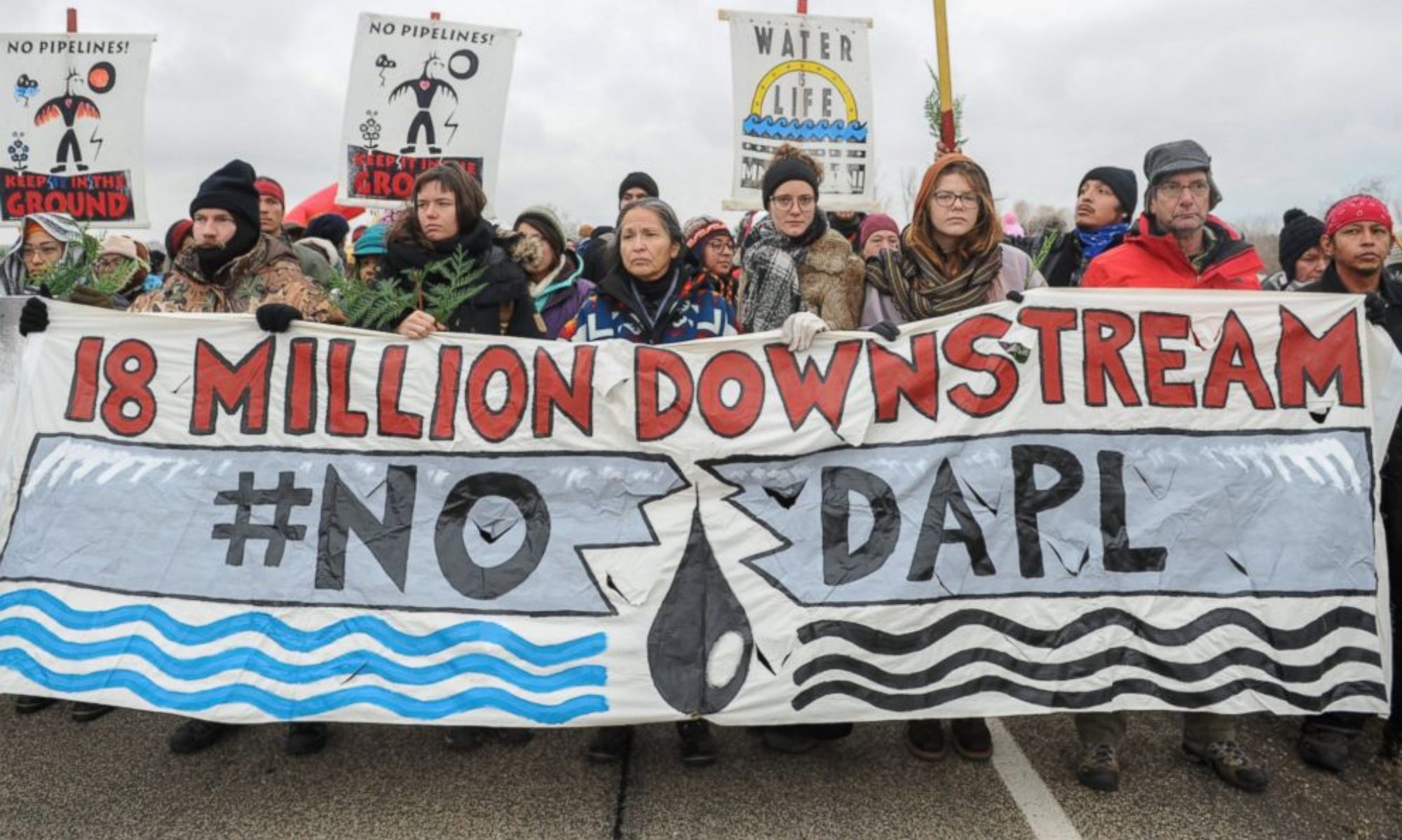Tribal land and water rights and safety are at the core of the DAPL controversy because of questions surrounding whether the construction of the pipeline has violated tribal sovereignty and the extent to which the pipeline endangers the tribe’s water source.
The danger is very real for the Standing Rock Sioux because the pipeline crosses underneath part of the Mississippi River, Lake Oahe, and if the pipeline leaks, it will cause irreparable damage to the tribe’s water source. In addition to the water threat, the pipeline crosses over the tribe’s sacred land, which could also be threatened if there were to be a spill. The “United Nations Declaration on the Rights of Indigenous Peoples,” Article 32 provides that:
States shall consult and cooperate in good faith with the indigenous peoples concerned through their own representative institutions in order to obtain their free and informed consent prior to the approval of any project affecting their lands or territories and other resources, particularly in connection with the development, utilization or exploitation of mineral, water or other resources.
This sovereign right means that prior to using the land under the primary water source for the Standing Rock Sioux, the tribe should have been consulted and they should have had the opportunity to freely give or not give consent. As Amber Penn Roco, a Native People’s Law and Environmental and Natural Resources lawyer who focuses on tribal sovereignty issues, points out, in this case and in many others like it, state and federal governments are not honoring their agreements. Penn-Roco notes, “Consultation that is done merely for the sake of fulfilling a statutory requirement does not fulfill the goals of the laws and policies requiring consultation. …most importantly, meaningful consultation between sovereigns should require informed consent” (Penn-Roco). It is clear that the Standing Rock Tribe was not meaningfully consulted in this case and they clearly did not freely give consent for construction. The U.S. Army Corps of Engineers (USACE) is the federal agency under the Army charged with determining if the company in charge of DAPL could build on the land close to the Standing Rock tribal lands. In July of 2016, the Standing Rock Sioux filed a lawsuit against the USACE, charging that they had not been properly consulted. Minutes after a judge denied their request to halt construction, the Obama administration intervened and said they were temporarily halting the project (Meyer). In December 2016, following large-scale protests including tribes from all over the country, activists, and veterans, the USACE itself denied the easement for the project and issued a statement saying “it made the decision because the Sioux tribe in that region of North Dakota — along with hundreds of allied protesters at the site over the past several months — had repeatedly expressed concerns that the pipeline posed a risk to its water and treaty rights” (Beaumont). Then, as soon as the Trump administration took power, however, the USACE reversed itself and authorized construction, saying that the Dakota Access Pipeline would have “no significant impact on tribal water and land” (USACE 1). The USACE provides no evidence of consultation with the tribe about the pipeline crossing under the Sioux water source or of what caused them to so quickly change their opinion. Despite the fact that the tribe and other activists and advocates have continued to petition and plea, while working within the limits of government, to have the location of the pipeline moved or at least to have the pipeline halted until another solution is found, the DAPL project has now moved forward, putting the livelihoods of those who live on the tribal lands at risk.
Daniel A. Medina, a writer for NBC News, extends arguments about the dangers DAPL poses to the Standing Rock Sioux by reporting on a different spill at another pipeline in Belle Fourche, North Dakota in December 2016. A central argument made against DAPL again and again has been that no matter what promises are made by the oil company, oil spills and leaks from pipelines are inevitable. Medina conducted interviews with many of the people in the Standing Rock Sioux tribe. He finds protesters feel that all of their progress and protests fueled by tribal rights and environmental concerns are validated by this other spill. They are also certain that when DAPL does leak, it will devastate the Standing Rock Sioux tribe’s main source of water. As it turns out, the Belle Fourche leak was three times larger than first expected. Medina and Penn Roco’s arguments, which are echoed by thousands of people protesting pipelines, is that the oil company and its investors are more interested in profits than in public safety or in respect for tribal land rights.

